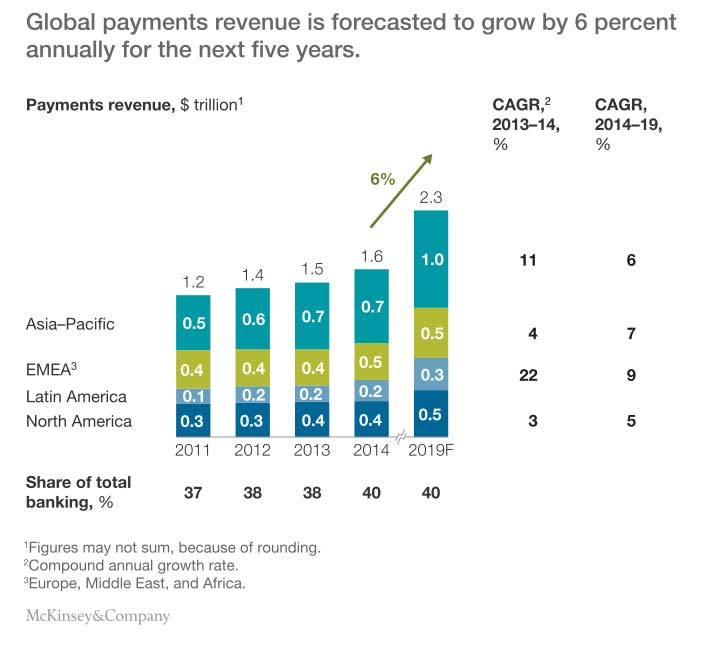Customers using their Android phone for ‘tap and pay’ purchases are most likely to be buying their groceries or a takeaway meal, spending an average of $27 per transaction, according to new data to be released by CUA at a national conference in Melbourne. By way of background, CUA originally was formed as a credit union in Queensland in the 1940s with just 180 members. Since then, through the amalgamation of more than 160 credit unions, they have become Australia’s “largest customer-owned financial institution”, with more than 400,000 customers, over 900 employees and $9 billion in assets under management.
In July last year, customer-owned financial institution CUA became the first banking provider in the Asia-Pacific to roll out a free mobile app using HCE technology, which allowed customers to ‘tap and pay’ with any compatible Android phone. The mobile app – CUA redi2PAY – was developed by CUA’s payments provider Cuscal and works on any NFC-enabled Android phone running on KitKat 4.4 or later.
CUA Head of Customer Insights Chris Malcolm and Cuscal Head of EFT, Acquiring and Digital Colin Sultana will share insights into how customers are using their ‘mobile wallets’ as part of a case study on the redi2PAY implementation at the Australian Cards and Payments Summit taking place at the Melbourne Convention & Exhibition Centre today.
Mr Malcolm said groceries were the top retail category for redi2PAY transactions, followed by fast food, petrol stations, restaurants/ dining and alcohol purchases.
“Interestingly, the top five retail categories for redi2PAY mobile payments are the exact same retail categories where CUA customers make the highest number of Visa PayWave purchases using their debit card,” he said.
“It appears that CUA’s early adopters of mobile payments technology are literally swapping their debit card for their mobile phone, using it for the same kind of purchases as they would have made with a traditional plastic card.”
Customers using redi2PAY are also using it more frequently – the number of customers using redi2PAY more than 35 times per month was around three times higher in March than it was six months earlier in October. The number of customers using mobile payments semi-regularly (5 to 14 times per month) is up 63 per cent for the same period.
The data also shows:
- Customers spend an average of $27 per transaction when using CUA redi2PAY – the same as the average amount for Visa PayWave purchases.
- The number of redi2PAY transactions spikes towards the end of the week (Thursday to Saturday). Saturday has the highest number of redi2PAY transactions, while Sunday has the least. Visa PayWave transactions also peak on Saturday, while Monday has the lowest number of payments.
- Most mobile payments occur between 12pm and 8pm, with a spike from 1-2pm. The trend is similar for Visa PayWave payments.
- The number of redi2PAY transactions each month has increased by more than 16 per cent since September 2014.
- December 2014 recorded the highest value of redi2PAY transactions for a single month, coinciding with the lead up to Christmas.
CUA and Cuscal have already been recognised in Australia and Asia as pioneers in mobile payments. A leading financial research company in Asia, IDC, recently named CUA redi2PAY as one of the top 25 mobile innovations in financial services for 2014-15.
“There is huge potential for this technology to fundamentally change how people pay for purchases,” Mr Malcolm said.
“People tend to take their smart phones everywhere they go and now, the need to also carry cash and cards in your wallets is becoming a thing of the past.”
He said approximately eight times more CUA customers now have a compatible Android phone which could be used for redi2PAY, compared to a relatively small group of customers who had the required technology when redi2PAY was launched 10 months ago.
“We’re seeing increased take-up of this HCE technology across the banking sector, as others follow our lead. The use of ‘mobile wallets’ will only continue to grow as customers become more familiar with the technology and its security features, and upgrade their Android devices to the latest models.”
TOP 10 RETAIL CATEGORIES – redi2PAY vs Visa PayWave
(1 September 2014 to 31 March 2015)
| CUA redi2PAY |
CUA Visa PayWave |
| Category of retailer |
Transactions |
Category of retailer |
Transactions |
| 1. Grocery stores |
26% |
1. Grocery stores |
27% |
| 2. Fast food outlets |
17% |
2. Fast food outlets |
17% |
| 3. Service stations |
14% |
3. Service stations |
11% |
| 4. Restaurants |
10% |
4. Restaurants |
11% |
| 5. Liquor outlets |
4% |
5. Liquor outlets |
4% |
| 6. Convenience food stores |
4% |
6. Convenience food stores |
3% |
| 7. Discount stores |
3% |
7. Discount stores |
3% |
| 8. Pharmacies |
3% |
8. Pharmacies |
3% |
| 9. Variety stores |
3% |
9. Hardware stores |
3% |
| 10. Hardware stores |
2% |
10. Bars/ pubs |
2% |

